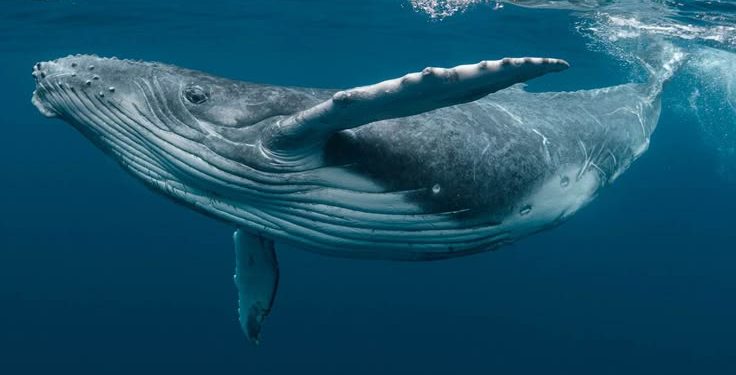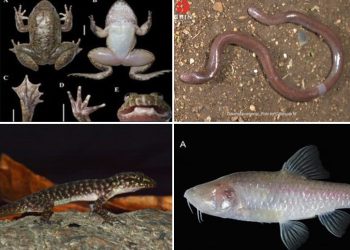Jakarta, Indonesia Sentinel — With the help of AI technology, a team of researchers successfully engaged in what they described as a “conversation” with a humpback whale named Twain. Led by Dr. Brenda McCowan of the University of California, Davis, the interaction marks a pivotal step in efforts to communicate with non-human intelligence, including potential extraterrestrial life.
According to Earth.com, Dr. McCowan and her team, part of the Whale-SETI project, focus on decoding humpback whale communication systems to inform strategies for detecting intelligent signals beyond earth.
Using underwater speakers, the researchers played recordings of humpback whale “contact calls” into the ocean. To their astonishment, Twain approached their vessel and responded to the calls. Over 20 minutes, the whale circled the boat, mirroring the intervals between each signal.
“This may be the first recorded communication exchange between humans and a humpback whale using the whale’s own ‘language,'” Dr. McCowan said.
The findings were published in the journal PeerJ in an article titled Interactive Bioacoustic Playback as a Tool for Detecting and Exploring Non-Human Intelligence: ‘Conversing’ with an Alaskan Humpback Whale.
The team plans to leverage advanced mathematical models, artificial intelligence (AI), and machine learning to analyze the complexity of whale communication. By identifying patterns and structures, they aim to understand the “rules” governing whale interactions.
Dr. Fred Sharpe of the Alaska Whale Foundation emphasized the intelligence of humpback whales, noting their complex social systems and innovative behaviors. “These whales create bubble nets to trap fish and communicate extensively through songs and social calls,” he explained.
Implications Beyond Earth
The behaviors observed in Twain align with core principles in the search for extraterrestrial intelligence. The Whale-SETI team believes studying whale communication can guide humanity in detecting and understanding intelligent signals, whether from the depths of Earth’s oceans or the vastness of space.
“Current technology limits us to assuming extraterrestrial beings would seek contact and target human receivers,” said Dr. Laurance Doyle of the SETI Institute. “The behavior of humpback whales supports this crucial assumption.”
Majapahit Kingdom will be Featured in Sid Meier’s Civilization VII Set for 2025 Release
Whale-SETI’s Unique Vision
The Whale-SETI project—short for Whale Search for Extraterrestrial Intelligence—is an innovative effort blending marine biology and the search for alien life. The researchers hypothesize that humpback whale vocalizations may carry complex messages akin to human language, offering a model for decoding extraterrestrial signals.
By employing sophisticated underwater microphones and AI algorithms, the team records and analyzes whale sounds to uncover linguistic-like patterns. This technology not only deepens understanding of whale communication but could also refine methods for identifying intelligent life elsewhere in the universe.
The “Conversation” with the humpback whale Twain is more than a fascinating tale of human-whale interaction; it represents a leap toward understanding intelligence signal in all its forms. By unlocking the mysteries of humpback whale communication, scientists hope to develop tools that may one day enable humanity to recognize and interpret messages from extraterrestrial life.
(Raidi/Agung)

























